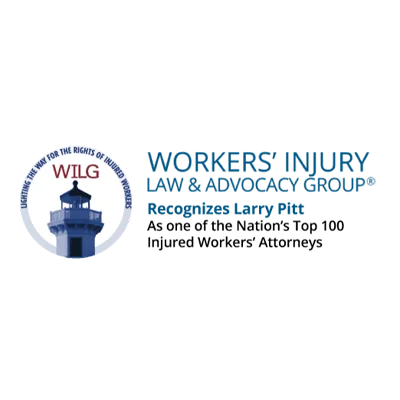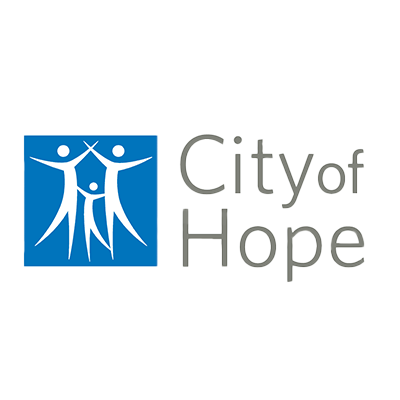Recovering
$ MILLIONS
For Injured Workers
Workers’ Compensation Covers Chronic Obstructive Pulmonary Disease (COPD)
Chronic Obstructive Pulmonary Disease (COPD) refers to a group of progressive and incurable lung diseases that make it hard for victims to catch their breath and live a normal life. COPD is caused by many different factors, including smoking, exposure to toxic chemicals, and environmental pollutants. When COPD is caused by a toxic environment at work, workers’ compensation benefits provide victims with compensation for medical bills and lost wages due to disability or a reduced capacity to work.
Claiming workers’ compensation benefits for COPD can be difficult, and many claims are initially denied. Medical bills, therapy, prescription medications, and reduced or lost wages due to disability from the disease can create a significant financial hardship for a victim and their family. Workers’ compensation lawyers fully understand the financial impact that a work-related injury has on a victim and their family, and they are committed to helping their clients claim the benefits they deserve.
GET A FREE CONSULTATION WITH LARRY PITT
Philadelphia Workers’ Compensation Lawyers at Larry Pitt & Associates, P.C. Help Victims of COPD Claim the Benefits They Deserve
If you were diagnosed with COPD and believe it is a work-related illness, contact the Philadelphia workers’ compensation lawyers at Larry Pitt & Associates, P.C. today. Call us at 888-PITT-LAW or contact us online to schedule a free consultation today. We work diligently to ensure that our clients’ legal rights are protected, and that they claim the maximum amount of workers’ compensation benefits available under the law.
Types of COPD
COPD refers to several chronic lung diseases that have common causes and significantly impact the quality of life a victim experiences when diagnosed with the condition.
- Non-Reversable Asthma or Refractory Asthma: Asthma is a common lung disorder that affects millions of Americans, including children. Refractory asthma does not respond to typical treatment, such as preventive steroidal powders and bronchodilators. The inflammation of the bronchial sacs within the lungs is chronic, which leaves victims with chest tightness, wheezing, and shortness of breath.
- Chronic Bronchitis: Bronchitis is a common ailment that occurs when bacteria or viruses enter the lungs and airways. It is commonly treated with antibiotics, cough syrups, and bronchodilators. The illness usually lasts seven to 10 days before it resolves. Chronic bronchitis is diagnosed when bronchitis lasts at least three months over a period of two or more years. The bronchial tubes and fibers deep within the lungs become damaged and clogged with mucus, leaving victims with a chronic cough and shortness of breath. As the illness progresses, mucus production increases, which results in more coughing and damage within the lungs.
- Emphysema: This is the most serious form of COPD and occurs when the air sacs in the lungs become so swollen that oxygen absorption is severely affected. Enlarged air sacs lose their elasticity, which makes it difficult for victims to release carbon dioxide. This shortness of breath can leave individuals struggling to breathe, and in advanced cases, requires victims to live on continuous oxygen supplied by artificial means. This lack of oxygen puts a tremendous strain on the heart and lungs and can lead to death.
Who is at Risk for Developing COPD?
Smoking is the number one cause of COPD, but there are many work environments and factors that lead to this disease as well. These include:
- Coal miners
- Hard rock miners
- Tunnel workers
- Concrete manufacturers
- Construction workers
- Rubber manufacturers
- Restaurant workers, specifically cooks that are subjected to working in small areas with poor ventilation
- Workers in industries that have a high exposure to toxic fumes and chemicals, such as adhesives, leather, lubricants, paints, coatings, paper, pharmaceuticals, plastics, printing, sugar, and textiles
- Aerospace industry workers
- Farmers
- Firefighters
- Maritime workers
- Welders
- Woodworkers
Symptoms of COPD
Continuous shortness of breath is the most common sign of COPD, but there are other symptoms as well.
- Chronic cough
- Cough that produces substantial amounts of mucus
- Increased shortness of breath, even during moments of inactivity
- Wheezing
- Recurrent respiratory infections
- Chest tightness
- Fatigue
- Difficulty performing routine tasks and work responsibilities
- Decreased mobility due to breathlessness
- High blood pressure
- Sleep apnea
- Depression
- Anxiety
As symptoms and consequences of COPD progress, victims tend to develop heart disease, pulmonary hypertension, and diabetes.
How is COPD Diagnosed?
There are several medical tests used to diagnose a person with COPD, including:
- Lung function tests to measure an individual’s capacity to breathe in oxygen and expel carbon dioxide.
- Chest X-Rays to determine the level of lung damage and rule out other lung diseases and heart failure.
- CT scans to screen for lung damage deep within the air sacs and lung tissue.
- Arterial blood gas analysis to measure the level of oxygen in the blood.
- Genetic lab tests to determine a person’s likelihood of contracting COPD when they have a family history of the disease.
Treatment for COPD
Fortunately, there are effective treatments to help manage the symptoms of COPD, including:
- Steroidal bronchodilators and non-steroidal bronchodilators that relax and open the airways
- Oral steroids to reduce inflammation
- Medications, such as theophylline and Phosphodiesterase-4 inhibitors
- Antibiotics to treat and prevent lung infections
- Oxygen therapy
- Exercise and physical therapy to increase lung capacity and strengthen the lungs
- Roflumilast (Daliresp), which is a new medication that reduces inflammation and improves lung function
How Can I Protect Myself from Contracting COPD on the Job?
All employers have a legal responsibility to provide a workplace for their employees that is safe and free from unnecessary risks and hazards. Education, training, and personal protective equipment should be provided by employers to ensure that their workers fully understand the risks associated with their jobs, and that they understand what protective measures they can employ to reduce their risk of suffering workplace injuries or illnesses.
A safe workplace includes:
- Proper training on the safe handling of toxic chemicals and pollutants
- Availability and access to personal protective equipment, such as respirators, facial masks, and eye safety glasses
- Detailed workplace safety procedures and policies
- Access to information on job-related hazards and protection
- Proper lighting and ventilation
- Routine inspection and maintenance of equipment
- Lock out/tag out procedures that are clearly posted
- Compliance with Occupational Safety and Health Administration standards and mandates
- Proper reporting of all workplace accidents and injuries
- Routine medical evaluations and diagnostic testing for work-related injuries and illnesses
What Should I Do If I Am Diagnosed with COPD?
If you were diagnosed with COPD and believe it is related to the toxic exposure of elements in your work environment, it is imperative to prove your illness is a direct result of your job duties. The burden of proof falls on the victim. Workers that are routinely exposed to workplace toxins or environmental pollutants should be screened for signs of COPD before symptoms occur. Victims of COPD often delay medical intervention until their symptoms become chronic and life altering. When symptoms are related to COPD, the disease usually advances to a level where medical intervention is necessary.
Workers that have a family history of COPD are at an increased risk for developing the disease. Careful monitoring of lung capacity and function is crucial for workers with a genetic predisposition of COPD that work in industries with an increased risk for the condition. Early intervention can prevent refractory asthma and chronic bronchitis from advancing to emphysema.
Diagnostic testing that includes spirometry, oximetry, X-rays, CT scans, and blood tests are crucial in proving that a worker’s COPD is directly related to their work environment. Even if you believe your COPD is the result of exposure to toxic chemicals and pollutants from a job you held previously, you can still claim workers’ compensation benefits if you can prove the disease is the direct result of your previous employment.
Workers’ compensation lawyers are also experienced in standing up to corporate legal teams and insurance lawyers that are poised to protest workers’ compensation claims. Large corporations and insurance companies retain legal teams that devote their time to fighting claims for compensation and benefits. Navigating through the legal process of an appeal for a denial of workers’ compensation benefits can be overwhelming for an individual. Effective representation can ensure that your legal rights are protected and that you claim the maximum amount of compensation available under the law.
What Our Clients Say













